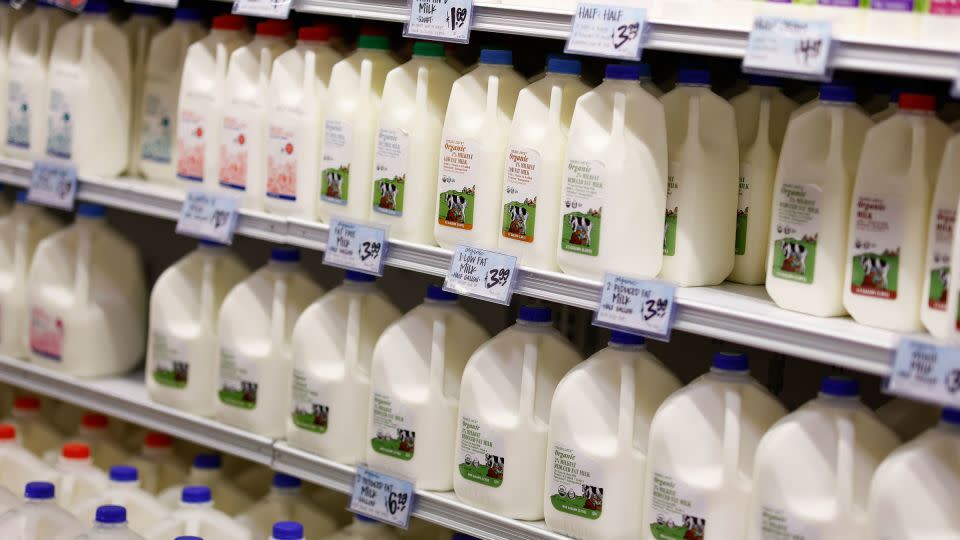Continued FDA testing finds no active bird flu virus in variety of dairy products

Ongoing testing of milk and dairy products by the US Food and Drug Administration has not found any active H5N1 bird flu virus in 297 samples of products purchased in grocery stores, the agency said Wednesday.
The FDA has tested samples of fluid milk and other kinds of products made from milk, like cheese and sour cream, as well as products made with milk powder such as infant and toddler formula.
In the first set of 96 samples, the agency said, 20% – 1 in 5 – contained remnants of the H5N1 virus, but additional tests to see whether the virus could actively infect eggs determined that those viral traces were inactive and would not be able to make people sick.
Results from an additional 201 samples were released Wednesday and also showed no evidence of active virus. The agency didn’t say where the sampled products were purchased.
“These additional preliminary results further affirm the safety of the US commercial milk supply,” said Dr. Don Prater, acting director of the FDA’s Center for Food Safety and Applied Nutrition.
The government is also testing samples of raw and cooked ground beef purchased at grocery stores, as well as pooled raw milk sent to processors for pasteurization.
The FDA said it continues to strongly advise against consuming raw milk and recommends that the industry does not manufacture or sell raw milk or raw milk products.
The updates were part of a multiagency news conference on the government’s actions to evaluate and contain the H5N1 bird flu outbreak among dairy cows, which has spread to about three dozen herds in nine states: Texas, New Mexico, Michigan, Kansas, Idaho, Ohio, North Carolina, South Dakota and Colorado. The highest concentration of infected cattle is in Texas, where 12 herds have tested positive.
The virus spreading in cows has not been shown to spread efficiently from person to person, and the US Centers for Disease Control and Prevention says the public health risk is low. Only one person, a farm worker in Texas, has tested positive in connection to the outbreak.
Dr. Rosemary Sifford, chief veterinary officer for the US Department of Agriculture’s Animal and Plant Health Inspection Service, said Wednesday that the agency believes the virus jumped from infected wild birds to cattle in the Texas Panhandle.
“The initial spillover event in that geographic region likely was not an individual herd but a number of herds in that region, and then animals from those herds moving to other herds in other states were the initial movements of the virus,” Sifford said.
Cattle moving between states were probably asymptomatic, she said, and it may not have always been cows that were spreading the infection.
“In some cases, the movement of equipment or other items between herds, not necessarily cattle,” she said.
Sifford said that USDA and CDC scientists have not seen any genetic changes to the sequences they’ve analyzed that would facilitate the spread of this type of flu in people.
The CDC said certain people are at higher risk of infection than others, including those who work with poultry and livestock on farms, veterinarians and slaughterhouse workers.
Members of these groups should avoid unprotected close contact with sick or dead birds or other animals, raw milk, udders of milk cows, feces or potentially contaminated water like buckets, pans, ponds or troughs.
In its updated recommendations, the CDC says workers should wear personal protective equipment including disposable coveralls or aprons, face masks, safety goggles or face shields, rubber boots, disposable hair covers and disposable gloves.
If they are exposed to sick or potentially infected animals, the CDC advises workers to watch for symptoms for 10 days after the last known exposure.
For more CNN news and newsletters create an account at CNN.com

